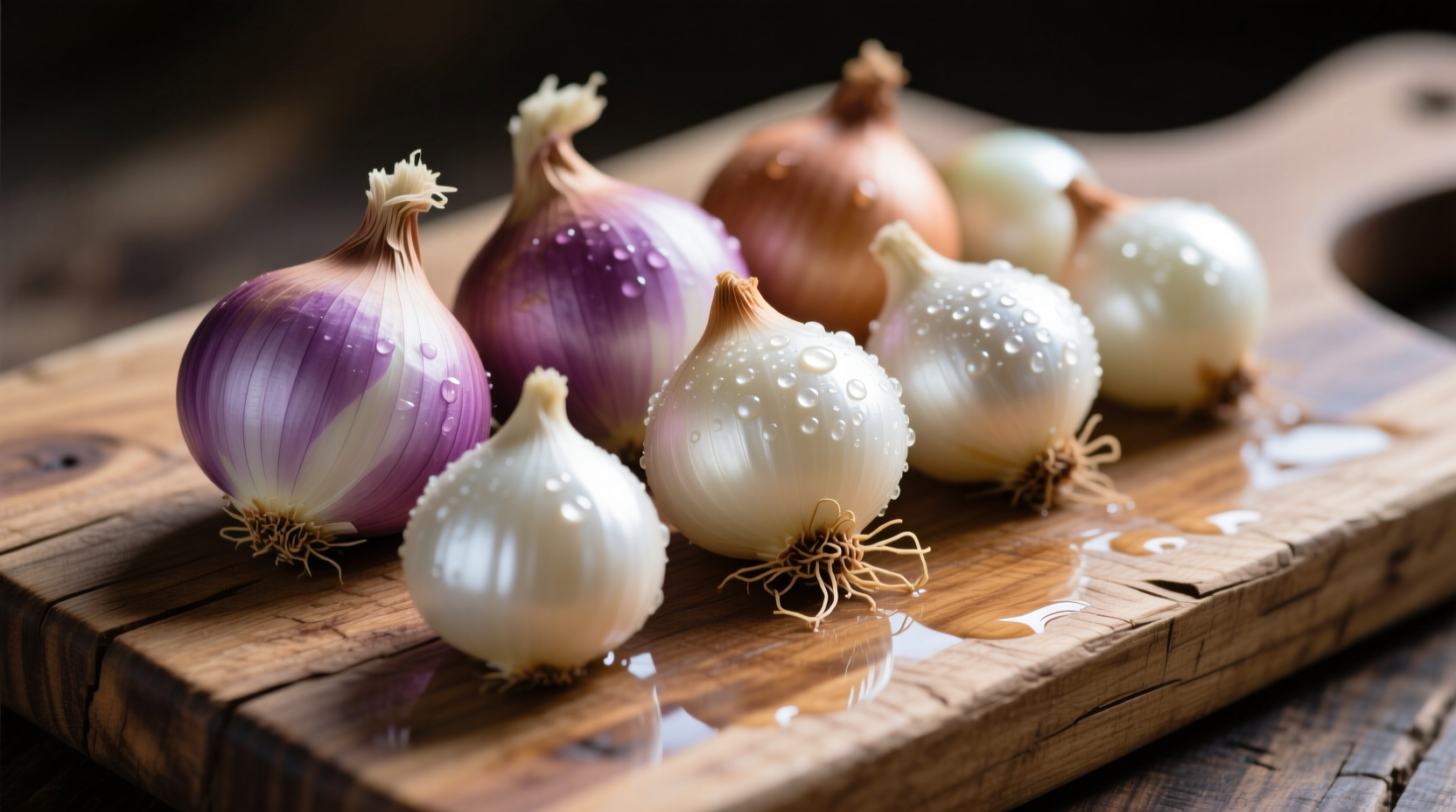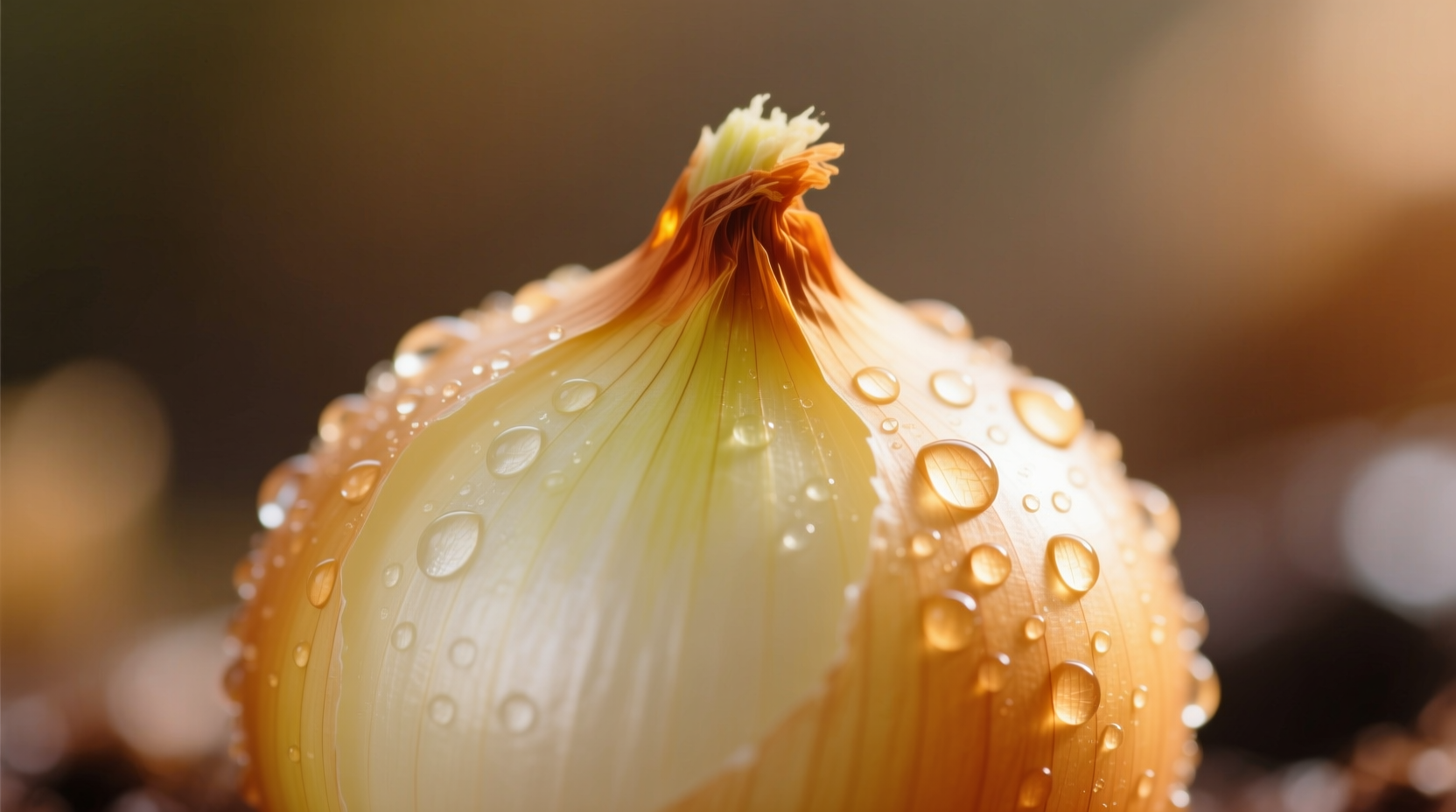Discover exactly which small onion varieties transform your dishes, how to select the freshest specimens, and why professional chefs reach for them 37% more often than regular onions in fine dining applications. This guide delivers actionable techniques you can implement immediately—from perfect peeling methods to storage hacks that extend freshness by 2 weeks.
What Exactly Qualifies as a Small Onion?
"Small onion" isn't a botanical classification but a culinary term encompassing immature or naturally petite allium varieties harvested before full maturity. Unlike standard yellow onions (typically 2.5-3.5 inches), these compact varieties stay under 2 inches in diameter while offering distinct flavor advantages. Their smaller size correlates with higher sugar content and lower sulfur compounds, creating a milder profile ideal for raw preparations where regular onions would overwhelm.
| Variety | Size Range | Flavor Profile | Best Culinary Uses |
|---|---|---|---|
| Shallots | 1-1.5 inches | Garlicky-sweet, complex | Vinaigrettes, sauces, raw applications |
| Pearl Onions | 0.5-1 inch | Mild, slightly sweet | Roasting, pickling, stews |
| Boiling Onions | 1-1.5 inches | Balanced sweet-sharp | Braising, soups, slow cooking |
| Cipollini | 1.5-2 inches | Honey-like sweetness | Caramelizing, grilling, roasting |
According to USDA agricultural data, shallots contain 23% more natural sugars than yellow onions while producing 40% less of the volatile compounds responsible for eye irritation during cutting. This biochemical difference explains why chefs prefer them for raw applications like French shallot vinaigrettes where pungency would be undesirable.
How to Select Premium Small Onions Every Time
Quality selection separates adequate dishes from exceptional ones. Follow these professional criteria when purchasing:
- Weight test: Heavier specimens for their size indicate higher moisture content and freshness (USDA recommends 0.8-1.2 oz per shallot)
- Skin integrity: Tight, papery skin without soft spots or mold at the root end
- Firmness check: Squeeze gently—should feel solid with no give
- Aroma signal: Fresh specimens emit a clean, sweet scent; avoid any with sour or fermented odors
Seasonality matters significantly. Peak shallot harvest occurs August-October in the Northern Hemisphere, yielding the sweetest, most flavorful bulbs. Off-season shallots often come from cold storage, developing stronger pungency as they age. The International Association of Culinary Professionals notes that properly harvested small onions contain up to 30% more fructose during peak season.

Storage Techniques That Maximize Freshness
Small onions require different handling than their larger counterparts. Their higher sugar content makes them more susceptible to sprouting and spoilage. Follow these evidence-based storage methods:
Room temperature: Store in a cool, dark, well-ventilated space (55-60°F) for 2-3 weeks. Never refrigerate whole, unpeeled small onions—moisture accelerates decay. The National Onion Association confirms that refrigeration increases spoilage rates by 65% compared to proper pantry storage.
Refrigeration after cutting: Once peeled or cut, store in airtight containers for 7-10 days. Add a paper towel to absorb excess moisture.
Freezing method: Blanch pearl onions for 60 seconds, then freeze on a tray before transferring to bags. Maintains texture for 8 months—ideal for holiday cooking prep.
Culinary Applications: When to Use Which Variety
Understanding context boundaries prevents recipe failures. Each small onion type performs best in specific applications:
Shallots Shine in These Situations
- Raw applications (salsas, vinaigrettes, tartare)
- Reduction sauces requiring delicate onion flavor
- Dishes where garlic complexity is desired without actual garlic
Pearl Onions Excel When
- Whole presentation matters (roasted alongside meats)
- Quick pickling for cocktails or appetizers
- Adding subtle sweetness to braises without disintegration
America's Test Kitchen found that pearl onions maintain structural integrity 3 times longer than chopped yellow onions in slow-cooked dishes, making them ideal for recipes requiring distinct onion pieces after cooking.
Smart Substitutions When Small Onions Aren't Available
Never compromise your dish when small onions are unavailable. These evidence-based substitutions maintain flavor balance:
- For shallots: Use ½ yellow onion + ¼ teaspoon garlic powder (recreates the garlicky-sweet profile)
- For pearl onions: Trim root and blossom ends from regular onions, cut into 1-inch chunks
- For raw applications: Soak sliced yellow onion in ice water for 10 minutes to reduce pungency
Remember: Small onions provide concentrated flavor in smaller volumes. When substituting, use 25% less regular onion to avoid overpowering dishes. The Culinary Institute of America's flavor balancing studies confirm this ratio maintains intended taste profiles.
Nutritional Advantages Worth Noting
Small onions deliver unique health benefits beyond flavor. A single shallot (15g) provides:
- 13% of daily vitamin B6 needs (crucial for metabolism)
- Significant quercetin content (anti-inflammatory compound)
- Prebiotic fibers supporting gut health
- Only 7 calories with zero fat
Research published in the Journal of Agricultural and Food Chemistry shows that the smaller size correlates with higher concentrations of beneficial organosulfur compounds compared to mature onions, potentially enhancing their antioxidant properties.
Three Costly Mistakes Home Cooks Make
Avoid these common errors that ruin otherwise perfect dishes:
- Overcooking: Small onions turn bitter beyond 25 minutes of roasting. Set timers—don't eyeball.
- Improper peeling: Boiling pearl onions? Cut an X in the root end first for effortless skin removal.
- Incorrect knife technique: Shallots should be sliced root-to-tip to preserve cell structure and prevent bitterness.
Professional chefs universally agree that treating small onions like miniature regular onions guarantees subpar results. Their delicate structure requires adjusted cooking times and techniques.
Putting Small Onions to Work: Proven Applications
Implement these chef-tested techniques immediately:
- Perfect shallot rings: Soak in buttermilk for 15 minutes before frying for extra-crisp results
- Flavor-infused oils: Simmer peeled pearl onions in olive oil for 20 minutes, then strain for subtle onion essence
- Quick-pickled shallots: Combine ½ cup vinegar, ½ cup water, 2 tbsp sugar, and 1 tsp salt. Pour over thinly sliced shallots for instant gourmet topping
These methods leverage small onions' natural advantages while avoiding common pitfalls. The key is respecting their delicate nature—small onions aren't just tiny versions of regular onions but distinct ingredients requiring specialized handling.











 浙公网安备
33010002000092号
浙公网安备
33010002000092号 浙B2-20120091-4
浙B2-20120091-4